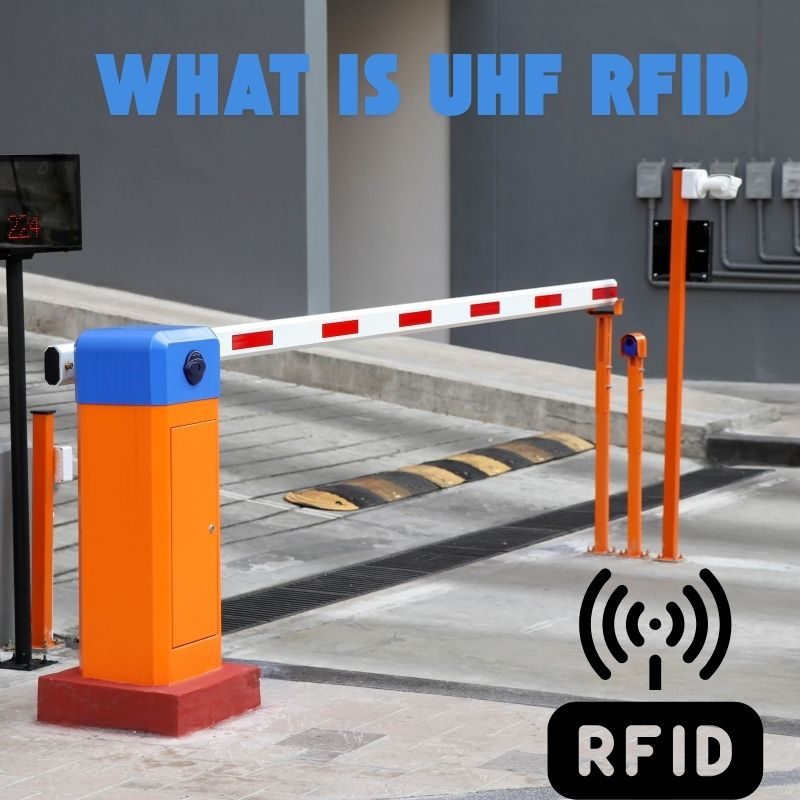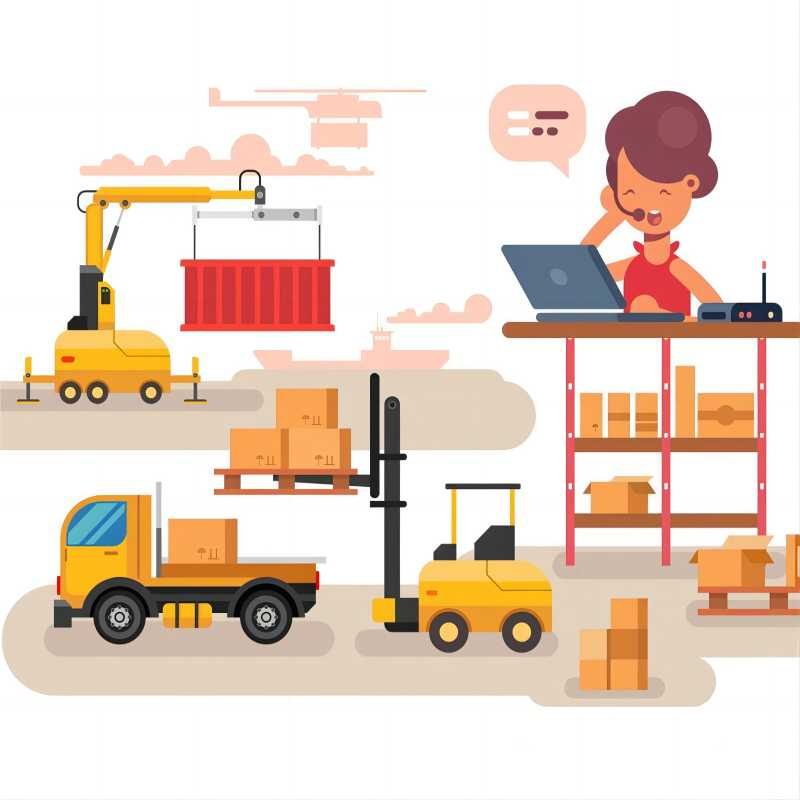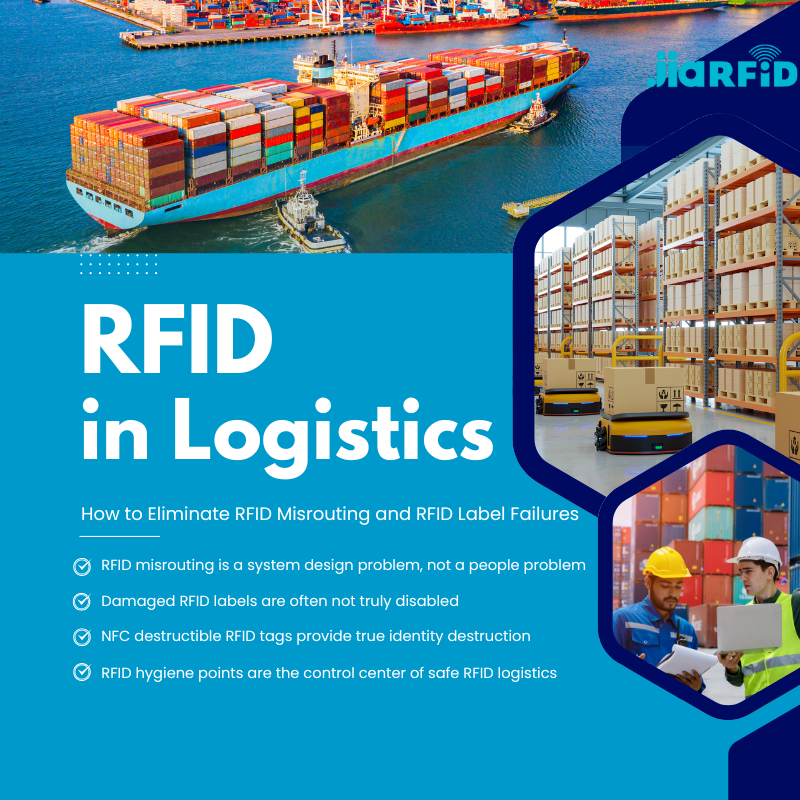
¿Qué es RFID UHF?
Tabla de contenido
Introducción
RFID UHF (Identificación por radiofrecuencia de ultra alta frecuencia) es una tecnología de identificación de vanguardia que está ganando impulso en diversos sectores. Desde el comercio minorista y la logística hasta la sanidad y la agricultura, su capacidad para permitir un intercambio de datos rápido y sin contacto está transformando el funcionamiento de las empresas.
Tanto si está explorando la RFID por primera vez como si desea profundizar en sus conocimientos, esta guía le guiará a través de lo que RFID UHF es, cómo funciona, sus aplicaciones y por qué es una tecnología imprescindible en 2025.

¿Qué es RFID UHF?
UHF RFID, abreviatura de identificación por radiofrecuencia de ultra alta frecuencia, es una tecnología de comunicación inalámbrica que utiliza ondas de radio para identificar y rastrear etiquetas adheridas a objetos. Es una de las tres categorías principales de frecuencia en la tecnología RFID, siendo las otras dos la baja frecuencia (LF) y la alta frecuencia (HF).
La UHF suele operar dentro del rango de 860 MHz a 960 MHz y es conocida por:
- Mayor alcance de lectura (hasta 12 metros o más)
- Transmisión de datos más rápida
- Capacidad de lectura masiva
En términos más sencillos, la RFID UHF es como un “código de barras digital potenciado”: no necesita línea de visión y puede leer cientos de artículos al instante.
¿Cómo funciona la tecnología RFID UHF?
Para comprender cómo funciona la RFID UHF, veamos sus componentes principales:
- Etiquetas RFID: Contienen un microchip y una antena que almacenan datos.
- Lectores RFID: Emite ondas de radio y recibe datos de las etiquetas.
- Antenas: Aumenta la señal entre las etiquetas y los lectores.
- Middleware/Software: Procesa y gestiona los datos recopilados.
Hay dos tipos principales de Etiquetas RFID UHF:
- Etiquetas UHF pasivas: Depende de la energía de la señal del lector; más barato y de uso común.
- Etiquetas UHF activas: Alimentado por batería; adecuado para aplicaciones de largo alcance y en tiempo real.
Funcionalidad clave:
- El lector emite una señal en la banda UHF.
- La etiqueta recibe energía, se enciende y envía sus datos.
- El lector recopila estos datos y los envía a un sistema backend para su procesamiento.
El sistema puede leer varias etiquetas simultáneamente, incluso a altas velocidades, lo que hace que la tecnología RFID UHF sea ideal para entornos dinámicos, como cintas transportadoras o inventarios en rápido movimiento.
Ventajas de la tecnología RFID UHF
¿Por qué está ganando tanto terreno la tecnología RFID UHF? Porque resuelve los retos reales del seguimiento y la automatización. Estas son sus ventajas más destacadas:
- Largo alcance de lectura: Hasta 12 metros, incluso en entornos difíciles.
- Lectura masiva: Lee cientos de etiquetas en segundos.
- Rentable: Las etiquetas pasivas son asequibles para su uso a gran escala.
- Visibilidad en tiempo real: Actualizaciones instantáneas sobre el inventario y el movimiento de activos
- Fuera del campo visual: No es necesario escanear directamente como con los códigos de barras.
- Escalabilidad: Adecuado para operaciones pequeñas o cadenas de suministro globales.
En resumen, aumenta la eficiencia, la precisión y la automatización, pilares fundamentales para las empresas modernas.
Aplicaciones comunes de la RFID UHF
La tecnología RFID UHF se ha convertido en una tecnología fundamental en los sistemas modernos de automatización y seguimiento, ya que ofrece un alcance, una velocidad y una versatilidad excepcionales. Su capacidad para leer cientos de etiquetas simultáneamente y a largas distancias la hace muy valiosa en una amplia gama de sectores.
Minorista
- Control de inventario
- Sistemas antirrobo
- Pago automático
- Actualización de existencias en tiempo real
Logística y cadena de suministro
- Seguimiento de envíos
- Gestión de palets
- Operaciones de cross-docking
- Comprobante de entrega
Fabricación
- Seguimiento del trabajo en curso (WIP)
- Control de calidad
- Monitoreo de equipos
Cuidado de la salud
- Pulseras para pacientes
- Seguimiento de equipos
- Inventario farmacéutico
Agricultura
- Seguimiento del ganado
- Seguimiento de equipos agrícolas
- Sistemas de riego inteligentes
Bibliotecas y educación
- Seguimiento de libros
- Gestión de activos de laboratorio
- Control de acceso
Independientemente del sector, la tecnología RFID UHF ofrece visibilidad, eficiencia y trazabilidad en tiempo real.
RFID UHF frente a RFID HF y LF: diferencias clave
| Característica | LF (baja frecuencia) | HF (alta frecuencia) | UHF (frecuencia ultraalta) |
|---|---|---|---|
| Frecuencia | 125-134 kHz | 13,56 MHz | 860-960 MHz |
| Rango de lectura | ~10 centímetros | ~1 m | Hasta 12 m |
| Velocidad de datos | Lento | Moderado | Rápido |
| Costo | Bajo | Moderado | Varía |
| Casos de uso | Seguimiento de animales | Pagos sin contacto | Cadena de suministro, comercio minorista, logística |
La tecnología RFID UHF ofrece el mayor alcance de lectura y el rendimiento más rápido, lo que la hace ideal para entornos dinámicos y el seguimiento de grandes volúmenes.
Normas y reglamentos sobre RFID UHF
Las normas regulan el uso global de la tecnología RFID UHF para garantizar la compatibilidad:
- EPCglobal Gen2 / ISO 18000-6C: Estándar industrial para RFID UHF pasivo
- FCC (EE. UU.): Funciona en 902-928 MHz.
- ETSI (Europa): Funciona en 865-868 MHz.
- Otras regiones: Puede variar ligeramente en función de la normativa sobre telecomunicaciones.
Es fundamental garantizar el cumplimiento de las normativas regionales sobre frecuencias al implementar la tecnología RFID UHF a nivel mundial.
Tipos de etiquetas RFID UHF
Etiquetas RFID UHF pasivas
- Más común
- Rentable
- Se utiliza en el comercio minorista, la logística, etc.
Etiquetas RFID UHF activas
- Funciona con pilas
- Mayor alcance
- Utilizado en el seguimiento de activos de alto valor.
Etiquetas semipasivas (BAP)
- Asistido por batería para un mejor rendimiento
Factores de forma de etiquetas
- Incrustaciones
- Etiquetas
- Etiquetas rígidas
- Etiquetas resistentes para metal o entornos hostiles
Elija el tipo de etiqueta en función de su entorno, los requisitos de alcance y su presupuesto.
Desafíos y limitaciones de la RFID UHF
Como cualquier tecnología, la RFID UHF no es perfecta. Esto es lo que hay que tener en cuenta:
- Interferencia del metal y los líquidos: Puede bloquear o distorsionar las señales.
- Factores ambientales: Las temperaturas extremas pueden afectar al rendimiento.
- Limitaciones de la línea de visión: Las etiquetas en pilas densas pueden no leerse de forma fiable.
- Coste inicial: La configuración de la infraestructura puede resultar costosa.
- Sobrecarga de datos: Requiere un software robusto para gestionar la recopilación de datos a gran escala.
Sin embargo, con una planificación cuidadosa, estas limitaciones pueden minimizarse o mitigarse por completo.

Tendencias futuras en RFID UHF (2025 y más allá)
La tecnología RFID UHF no solo ha llegado para quedarse, sino que está evolucionando rápidamente. Entre las tendencias se incluyen:
- Integración con IoT: Sensores inteligentes + RFID = información valiosa sobre los datos
- Sistemas RFID basados en la nube: Gestiona las etiquetas desde cualquier lugar
- Inteligencia artificial y aprendizaje automático: Análisis predictivo utilizando datos RFID
- Ciudades inteligentes e infraestructura: Flujo de tráfico, gestión de residuos y más.
- Industria 4.0: Automatización de fábricas en tiempo real y gemelos digitales
Con menores costes y un mejor rendimiento, se espera una adopción masiva en todos los sectores a finales de la década.
¿Es la tecnología RFID UHF adecuada para usted?
La tecnología RFID UHF es una tecnología potente y escalable que puede ayudar a su empresa a reducir los procesos manuales, recortar pérdidas y mejorar la visibilidad. Tanto si gestiona un almacén como si realiza el seguimiento de dispositivos médicos de alto valor, las ventajas de la captura de datos de largo alcance y alta velocidad suponen un cambio revolucionario.
Pero, como ocurre con toda tecnología, el éxito reside en comprender sus puntos fuertes y utilizarla correctamente.
¿Está listo para explorar la tecnología RFID UHF para su negocio? Comience por consultar con un proveedor de soluciones RFID de confianza o llevar a cabo un programa piloto para evaluar sus necesidades.
Preguntas frecuentes sobre la tecnología RFID UHF
¿Qué significa UHF RFID?
UHF RFID son las siglas de «identificación por radiofrecuencia de ultra alta frecuencia». Se refiere a los sistemas RFID que operan en el rango de frecuencias de 860 a 960 MHz y son capaces de leer etiquetas a varios metros de distancia.
¿Cómo funciona la RFID UHF?
Los sistemas RFID UHF utilizan ondas de radio para la comunicación entre un lector y una etiqueta. El lector envía una señal que activa las etiquetas pasivas, las cuales envían sus datos al lector. Esto permite una identificación rápida e inalámbrica de los objetos sin necesidad de una línea de visión directa.
¿Cuál es el alcance de un sistema RFID UHF?
Los sistemas RFID UHF suelen tener un alcance de lectura de entre 3 y 12 metros (10 y 40 pies) para las etiquetas pasivas. Las etiquetas activas con baterías pueden ampliar el alcance de forma significativa, a veces hasta 100 metros o más.

Ray Zhou
Este artículo ha sido escrito por Ray Zhou, experto en tecnología RFID con más de 10 años de experiencia en el sector.
Comentarios
Productos destacados

RFID en logística: cómo eliminar los errores de enrutamiento y los fallos de las etiquetas RFID
La RFID en logística es más que una simple herramienta para acelerar los procesos. Se ha convertido en una parte fundamental del funcionamiento de las cadenas de suministro modernas.

¿Qué es la gestión de residuos mediante RFID?
Imagina una ciudad en la que todos los contenedores de basura hablan, no literalmente, sino a través de un pequeño chip que indica al sistema cuándo están llenos, cuándo se vacían y adónde van. Eso es lo que hace hoy en día la gestión de residuos mediante RFID.

¿Qué son las juntas de perno y sus aplicaciones? | Guía completa
En el comercio mundial y la logística, los precintos de seguridad desempeñan un papel crucial para garantizar la seguridad y el cumplimiento de las normas de la carga. Estos pequeños pero potentes dispositivos están diseñados para bloquear contenedores de transporte, remolques y puertas de carga con un mecanismo a prueba de manipulaciones.

¿Qué es un protector de tarjetas RFID? Ventajas, casos de uso y guía de compra
La tecnología RFID (identificación por radiofrecuencia) está en todas partes: en sus tarjetas de crédito, tarjetas de identificación, pases de transporte, llaves de habitaciones de hotel y mucho más. Ofrece rapidez y comodidad, pero también abre la puerta a un nuevo tipo de robo digital llamado "skimming". Ahí es donde entra en juego un protector de tarjetas RFID.

Pulseras RFID para eventos: Guía de compra a granel para organizadores
Las pulseras RFID para eventos se están convirtiendo en la solución a la que recurren los organizadores que necesitan una entrada más rápida, prevención del fraude y pagos sin efectivo en conciertos, festivales y recintos deportivos. A diferencia de las entradas de papel o los códigos QR, estas pulseras inteligentes utilizan chips integrados para agilizar el acceso, asegurar las transacciones y mejorar la experiencia de los invitados.

Cómo la etiqueta RFID en el parabrisas mejora el control de acceso de vehículos y los sistemas de peaje
En el vertiginoso mundo actual, la identificación de vehículos debe ser rápida, segura y sin contacto. Una etiqueta RFID en el parabrisas ofrece exactamente eso: una forma fiable de gestionar el cobro de peajes, el estacionamiento y el acceso sin detener los vehículos.
Etiquetas
BLOGS RELACIONADOS

RFID en logística: cómo eliminar los errores de enrutamiento y los fallos de las etiquetas RFID
La RFID en logística es más que una simple herramienta para acelerar los procesos. Se ha convertido en una parte fundamental del funcionamiento de las cadenas de suministro modernas.

¿Qué es la gestión de residuos mediante RFID?
Imagina una ciudad en la que todos los contenedores de basura hablan, no literalmente, sino a través de un pequeño chip que indica al sistema cuándo están llenos, cuándo se vacían y adónde van. Eso es lo que hace hoy en día la gestión de residuos mediante RFID.

¿Qué son las juntas de perno y sus aplicaciones? | Guía completa
En el comercio mundial y la logística, los precintos de seguridad desempeñan un papel crucial para garantizar la seguridad y el cumplimiento de las normas de la carga. Estos pequeños pero potentes dispositivos están diseñados para bloquear contenedores de transporte, remolques y puertas de carga con un mecanismo a prueba de manipulaciones.




